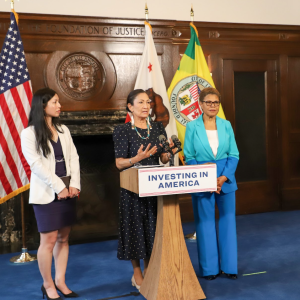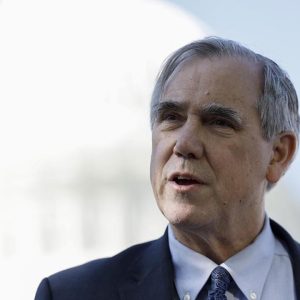 View Winners →
View Winners → Pasadena Council Considers Interim Ordinance to Limit Height of New Developments


City staff recommended an interim measure that would “limit the maximum height of new buildings city-wide to no more than 10 feet taller than the average height of existing buildings along the same block-face.” – Photo by Terry Miller / Beacon Media News
By Gus Herrera
At their latest regular meeting, the Pasadena City Council considered implementing an interim ordinance to reduce the maximum allowable height for multi-family and mixed-use developments city-wide. Although in the end, after more than a dozen public speakers and considerable discussion the Council was left with more questions than answers and the item was postponed for further study.
The move came in response to a recent influx of higher-density development projects, specifically some which have taken advantage of state concession permits that allow developers to tack on additional height/density, in exchange for providing affordable housing units.
Although it may sound reasonable on paper, city staff’s report cited a major concern that these state-sanctioned exchanges do not “provide sufficient affordable housing to warrant the benefits of the concessions they received, and that the City should require additional public benefits in exchange for higher densities and additional height.”
Furthermore, the City is worried that these state concessions are, in a sense, allowing developers to supersede Pasadena’s carefully-crafted general and specific plans, which have been tailored to allow a balance of new development in the central districts, while protecting the character of residential neighborhoods.
“The climate here is that the state is taking control of the density issue,” said Mayor Terry Tornek, “we had a process, the process has been pre-empted, and so now we’re reacting to a changing environment … the reality is what gets built now during this surge is going to be with us for 50 or 60 years. The built environment is being altered as we debate this in a way that’s going to have long-lasting effects on the City.”
In addition to these concerns that the state is usurping local policies, city staff (and many residents) are also worried that these high-density projects are simply “not consistent with the character of the City.”
Thus, in order to cauterize this current wave of development, city staff recommended implementing a two-step approach. First, an interim ordinance would serve as an immediate alternative to letting the specific plan process play out – a process which is not scheduled for completion until 2021, per staff’s report. Second, staff recommended a long-term strategy which included directing the City Attorney to draft a standard ordinance, as well as continuing to develop a “community-oriented” approach to development through the framework of the specific plan.
“It’s important that we keep the level of density … in conformance with the existing specific plan intact,” said David Reyes, Director of Planning and Community Development, “it doesn’t matter what’s in the box, it’s the box that’s causes the problems.”
Public comment on the matter revealed varying opinions, but a good majority of speakers seemed to agree that the City was rushing to create a simple solution to a very complicated issue.
Some local developers urged the Council to reject the recommended action out of consideration for those who have invested millions of dollars in acquiring property and are already in the City’s development pipeline. They cautioned against the potential unforeseen consequences of taking such immediate action and recommended that the City defer to the specific plan process – an approach which was recommended by the planning commission in April.
On the other hand, there were residents who supported staff’s recommendation as a means of countering the intensity of new development projects and protecting the character of their neighborhoods. This position was criticized by some developers who argued that development in the central districts does not directly threaten the residential neighborhoods, which are protected under the City’s specific plans – an argument which Mayor Tornek and Council Member Tyron Hampton disputed.
“As a Council, we represent the people who are living in Pasadena now, not the people who are coming to Pasadena,” said Council Member Hampton.
Mayor Tornek similarly argued in defense of Pasadena residents and their right to have a say in the development trends of the City, regardless of where they live, “people may live in Madison Heights … and not be directly threatened, but, when they come downtown, they’re not necessarily thrilled by what’s happening, because it just seems too dense.”








































































































